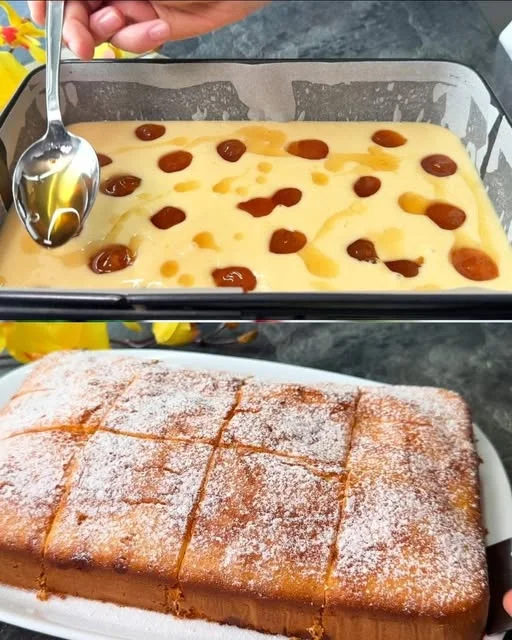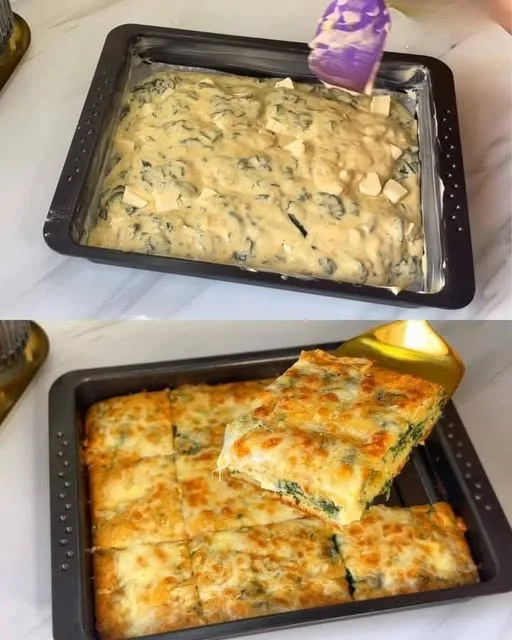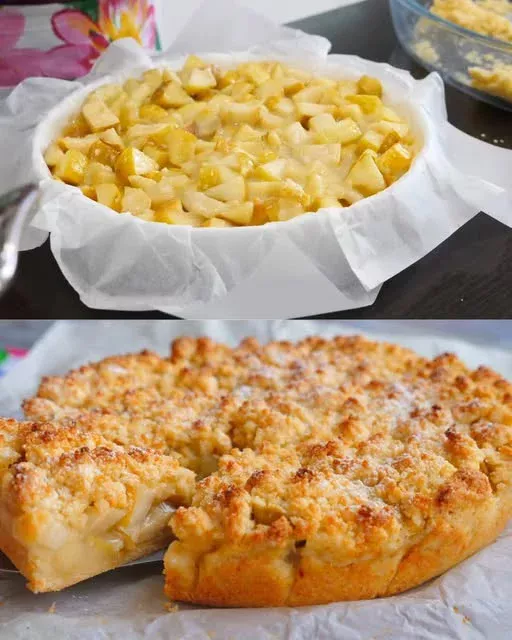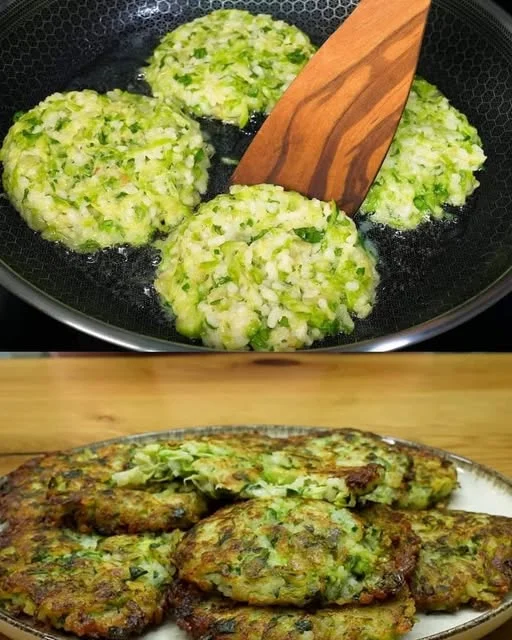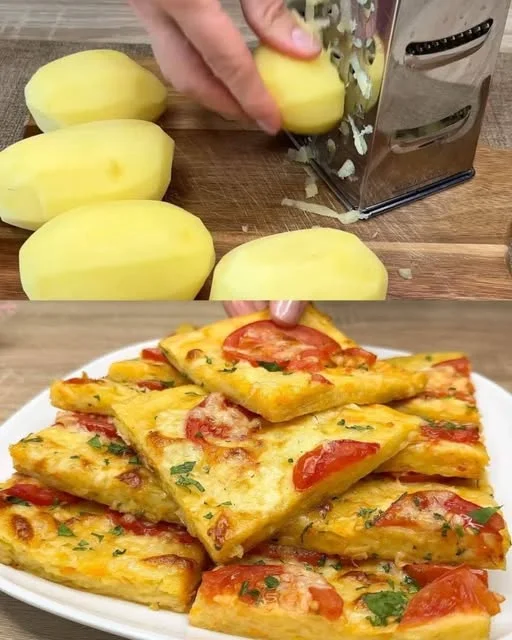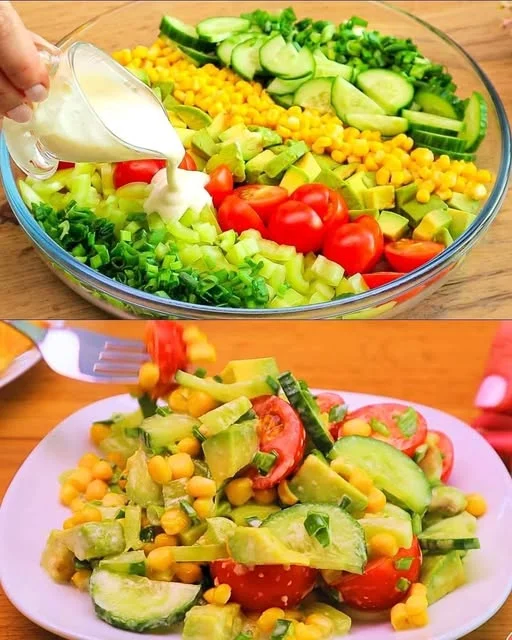My love for this recipe didn’t start in a professional kitchen, or in the glossy pages of a cookbook. It began on a gray afternoon, in a small tiled kitchen with steamed windows and music humming softly from the radio. My grandmother, who never measured a single thing in her life, grated potatoes with a rhythm only she understood — her hands steady, her smile quiet.
She would nod toward me to crack the eggs. She always said that a dish tasted better when two people made it together. There wasn’t much to the recipe — potatoes, eggs, something smoky from the fridge, and always a handful of cheese. But when it came out of the oven, golden and bubbling, it felt like something more than food. It was comfort. It was nourishment. It was, in its purest form, home.
This recipe is my interpretation of that memory — a simple and brilliant dish that anyone can make, from any kitchen, no matter how small or quiet. And best of all, it still tastes like home.
Why This Recipe Works So Well
We’ve seen endless potato casseroles, but there’s something timeless about the combination of golden potatoes, fluffy eggs, melted cheese, and savory sausage. Here’s why this one stands out:
1. It’s Incredibly Versatile
This is one of those recipes that works for breakfast, brunch, lunch, or even dinner. Serve it alongside a fresh salad for a light lunch or with a warm bowl of soup for something heartier. It’s flexible, adaptable, and never fussy.
2. Minimal Ingredients, Maximum Flavor
With just six core ingredients, this dish proves you don’t need a long shopping list to make something special. The key lies in balance — the earthy richness of the potatoes, the umami from smoked sausage, the silkiness of baked eggs, and the boldness of melted cheese.
3. Crowd-Pleaser Appeal
Whether you’re feeding a family, hosting brunch, or preparing weekday meal prep, this dish delivers. It’s naturally gluten-free (when using gluten-free sausage), easy to portion, and satisfying enough to keep everyone happy — from picky kids to flavor-seeking adults.
Ingredients
| Ingredient | Amount |
|---|---|
| Potatoes | 6 large, peeled and grated |
| Eggs | 4 |
| Salt | To taste |
| Black Pepper | To taste |
| Smoked Sausage | 100 grams, diced |
| Green Onions | Chopped, to taste |
| Cheese | 100 grams, grated (any type) |
Directions
- Preheat your oven to 180°C (350°F) and lightly grease a baking dish.
- Grate the potatoes and squeeze out any excess moisture using a clean towel or cheesecloth.
- In a large bowl, whisk the eggs and season with salt and black pepper.
- Add the grated potatoes, diced smoked sausage, chopped green onions, and grated cheese to the bowl. Mix everything until well combined.
- Pour the mixture into the prepared baking dish and spread it evenly.
- Bake for 35–40 minutes or until golden brown and the top is crispy.
- Let it cool slightly before slicing and serving warm.
Nutritional Information (Per Serving – Approx. 6 servings)
| Nutrient | Amount |
|---|---|
| Calories | ~290 kcal |
| Protein | ~13 g |
| Carbohydrates | ~22 g |
| Fats | ~16 g |
| Fiber | ~2.5 g |
| Sodium | ~500 mg |
The Genius is in the Texture
A great bake like this one should hit every note. You want the edges slightly crisp, the center custardy but firm, the cheese melty and bubbling, and the sausage providing little bursts of smoky flavor. That’s why the method — especially removing moisture from the potatoes before baking — is so important. It allows the eggs to bind everything together without becoming soggy.
The result? A beautifully unified dish that slices cleanly but still melts in your mouth.
Toppings, Mix-ins, and Variations
Once you’ve mastered the base version, you can start riffing on it depending on what you have in your kitchen. Here are a few fun twists:
– Herbs for Freshness
Add chopped parsley, chives, or dill for a fresh lift. These herbs don’t overpower the core flavors but do brighten them.
– Spice it Up
If you like heat, a pinch of paprika, chili flakes, or diced jalapeños goes a long way. The spice contrasts beautifully with the richness of the cheese and eggs.
– Cheese Options
Mozzarella makes for a subtle melt, but don’t hesitate to swap it out for sharper cheeses like cheddar, gouda, or a smoked provolone. Each brings a new dimension to the dish.
– Vegetarian-Friendly
Leave out the sausage entirely and bulk up the dish with sautéed mushrooms, bell peppers, or even a handful of spinach.
– Mini Muffin Version
Portion the mixture into muffin tins instead of a casserole dish. You’ll end up with individual egg-potato bites that are great for breakfast on the go.
Storage, Reheating, and Meal Prep Tips
This bake is not just delicious — it’s practical. That makes it ideal for meal planning or making ahead.
- To Store: Keep leftovers in an airtight container in the fridge for up to 4 days.
- To Freeze: Wrap slices tightly and freeze for up to 2 months. Thaw overnight in the fridge.
- To Reheat: Use an oven or toaster oven to reheat, which will preserve the crispy edges. Microwave works too but may soften the texture slightly.
Frequently Asked Questions (FAQs)
Can I prepare it the night before and bake in the morning?
Absolutely. Prepare the full mixture, pour it into your baking dish, cover, and refrigerate overnight. Let it sit at room temperature for 15–20 minutes before baking.
What kind of potatoes work best?
Starchy potatoes like Russets or Yukon Golds are ideal. They shred easily and bake up soft with crispy edges.
Can I make this dairy-free?
Yes, you can omit the cheese or use a dairy-free cheese alternative. The eggs still provide plenty of structure and richness.
Do I have to peel the potatoes?
Not at all. If you’re using thin-skinned potatoes and enjoy the rustic texture, feel free to leave them unpeeled. Just be sure to wash them thoroughly.
How can I make it more protein-packed?
Add extra eggs, diced chicken breast, or even lentils for a meat-free protein source. This dish adapts easily.
Is this recipe kid-friendly?
Very much so. The flavors are mild, the texture is soft, and the cheesy goodness is always a win with little ones.
A Dish That Belongs at Every Table
There’s something deeply satisfying about a recipe that delivers warmth, nourishment, and familiarity without stress or complication. This cheesy potato bake does all of that — and more. It’s the kind of dish that lives in rotation, one that never feels tired even after the fifth or sixth time you’ve made it.
Maybe it’s the simplicity. Maybe it’s the memory of it baking in the oven while the house slowly fills with scent and anticipation. Or maybe it’s the joy of sharing something made with so little — yet giving so much.
Conclusion: The Beauty of Everyday Ingredients
This “Simple and Brilliant” bake is more than just another casserole — it’s a love letter to home cooking. It reminds us that the best meals don’t always require fancy tools, hard-to-pronounce ingredients, or hours of preparation. Sometimes all you need is a handful of honest ingredients, a warm oven, and a little bit of care.
Serve it to loved ones, freeze it for busy days, or enjoy it straight from the baking dish at midnight — this is the kind of recipe that becomes a regular in your kitchen and a quiet favorite at your table.
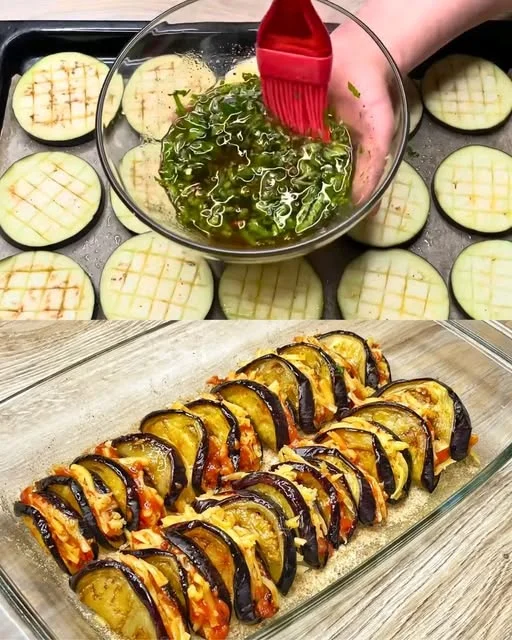
When Simplicity Wins: A Humble Potato Bake That Steals the Show
Ingredients
Method
- Preheat your oven to 180°C (350°F) and grease a baking dish.
- Peel and grate the potatoes, then squeeze out excess moisture using a clean towel or cheesecloth.
- In a large bowl, beat the eggs and season with salt and black pepper.
- Add grated potatoes, smoked sausage, green onions, and cheese to the eggs. Mix well to combine.
- Pour the mixture into the prepared baking dish and spread evenly.
- Bake for 35–40 minutes, or until the top is golden brown and set.
- Let cool slightly before slicing and serving.
Notes
- Feel free to substitute the smoked sausage with cooked bacon, turkey sausage, or a vegetarian option.
- For a spicier twist, add chopped jalapeños or a pinch of chili flakes.
- This dish reheats beautifully and can be made ahead for busy mornings or easy meal prep.
- Use starchy potatoes like Russets for the best texture and binding.



